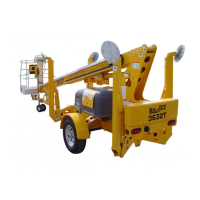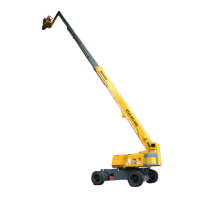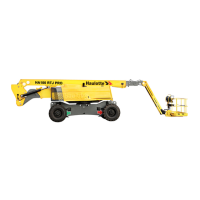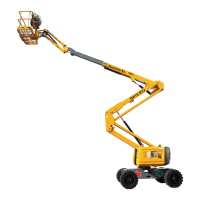What to do if Haulotte HTL 4010 show F03.12 (D) PWM supply relay fault?
- SSteven GentrySep 6, 2025
If your Haulotte Boom Lifts are displaying an F03.12 (D) error indicating a PWM supply relay fault, check KA122.
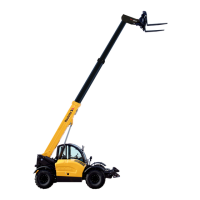
What to do if Haulotte HTL 4010 show F03.12 (D) PWM supply relay fault?
If your Haulotte Boom Lifts are displaying an F03.12 (D) error indicating a PWM supply relay fault, check KA122.
What to do if Haulotte Boom Lifts display F05.04 (D) Joystick operation defect (Lifting)?
If you're experiencing an F05.04 (D) error related to a joystick operation defect during lifting, check SJ120.
What to do if Haulotte HTL 4010 show F04.24 (D) Left-hand stabiliser solenoid valve fault?
If you're getting an F04.24 (D) error for the left-hand stabiliser solenoid valve, check YV122, YV700 and YV720.
What to do if Haulotte HTL 4010 display F04.25 (D) Right-hand stabiliser solenoid valve fault?
If you're getting an F04.25 (D) error for the right-hand stabiliser solenoid valve, check YV122, YV701 and YV721.
What to do if Haulotte Boom Lifts show F04.28 (D) Tilt correction solenoid valve fault?
If you're getting an F04.28 (D) error for the tilt correction solenoid valve, check YV122, YV740 and YV760.
What to do if Haulotte HTL 4010 display F04.30 (D) Floating lift TOR solenoid valve?
If you're experiencing an F04.30 (D) error related to the floating lift TOR solenoid valve, check YV380.
| Brand | Haulotte |
|---|---|
| Model | HTL 4010 |
| Category | Boom Lifts |
| Language | English |
General advice, manual, symbols, and label information for safe operation.
Rules, prohibitions, and potential risks associated with machine operation.
Defines the roles and responsibilities of owners, employers, trainers, and operators.
Procedures and checks before operation, including controls and safety labels.
Procedures for starting, operating, and shutting down the machine's engine.
Procedures for safely lifting, transporting, and placing loads.
Procedures for preparing and operating the machine on public roads.
Instructions for loading and securing the machine for transportation.
Procedures and precautions for towing a disabled machine.
Manual procedure for lowering the boom in an emergency.
Procedures for safely exiting the cab in an emergency.
Key technical specifications and features of the machine.
Diagram and measurements of the machine's overall dimensions.
Diagrams showing the machine's working area for different models.
Information on noise emission levels during operation.
Data regarding telehandler vibration levels.
General recommendations and guidelines for maintaining the machine.
Specific instructions and procedures for performing maintenance.
Guidelines for performing repairs and adjustments on the machine.
Tables detailing lubrication and maintenance tasks based on operating hours.
Recommended maintenance program and service intervals.
Detailed breakdown of maintenance tasks and their frequencies.
Important mechanical checks, pins, bearings, and slew ring replacement.
Daily or every 10-hour checks for machine condition and safety.
Lubrication and checks for components every 50 hours.
Maintenance tasks required every 100 hours of operation.
Maintenance tasks required every 250 hours of operation.
Maintenance tasks required every 500 hours of operation.
Procedures to determine if an attachment is approved for use on the machine.
Reasons not to use unapproved attachments and associated risks.
Checking attachment approval and possession of relevant capacity charts.
Proper use of capacity charts to determine load limits and reach.
Procedures for installing attachments, including locking devices.
Technical characteristics and operation of various accessories.
Procedure for replacing brake circuit accumulators.
Identification of main components in the electrical wiring diagram.
Identification of main components in the hydraulic diagram.
Procedure for diagnosing and reporting machine faults.
Log for recording maintenance and repair work performed on the machine.



